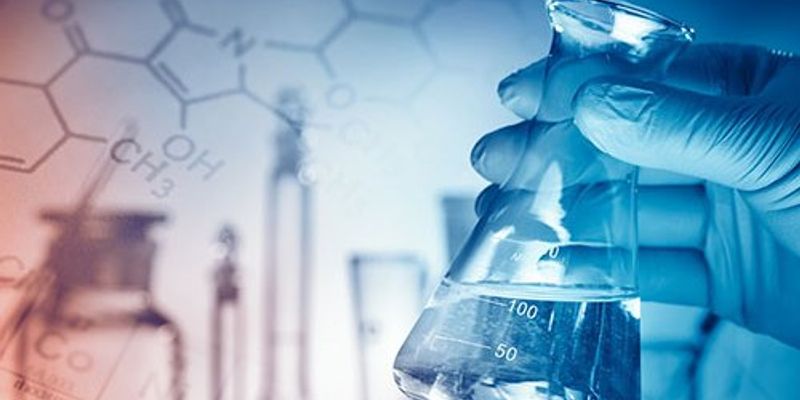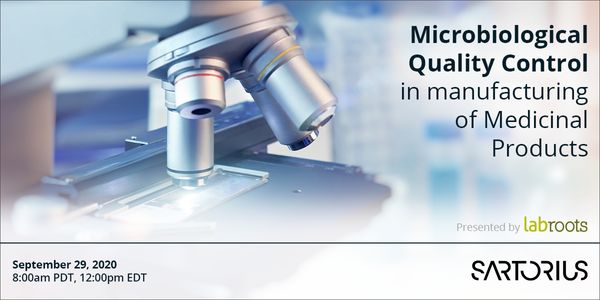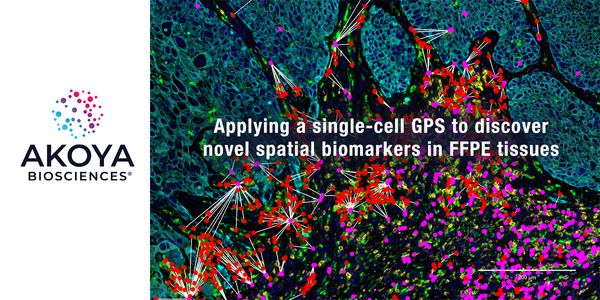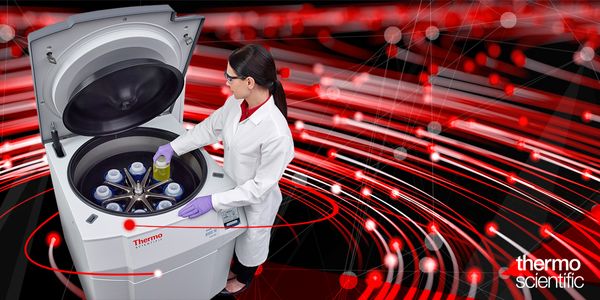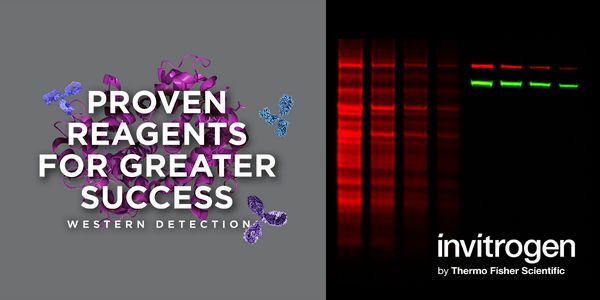Laboratory Methods
Laboratory Methods: are based on established scientific principles involving biology, chemistry, and physics, and encompass all aspects of the clinical laboratory from testing the amount of cholesterol in your blood to analyzing your DNA to growing microscopic organisms that may be causing an infection.
-
SEP 30, 2020 | 1:30 PMRNA plays important and diverse roles in biology, but molecular tools to manipulate and measure RNA are limited. We demonstrate that RNA-targeting CRISPR effector Cas13 can be engineered for...Speaker: Omar Abudayyeh, PhD , Jonathan Gootenberg, PhDPresented at: CRISPR Virtual Event Series 2020
SEP 30, 2020 | 12:00 PMThe CRISPR/Cas genome editing system has revolutionized nearly every aspect of the life science industry. Until recently, the most used formats for this technology have been plasmids, mRNA,...Speaker: Gurpreet Balrey, PhD , Peter Romanienko, PhDSEP 30, 2020 | 10:30 AMCRISPR-based genome editing has accelerated biological research and holds great potential for studying and treating human diseases. The CRISPR-Cas9 system requires a Cas9 nuclease and a guid...Speaker: James Goldmeyer, PhDSEP 30, 2020 | 6:00 AMGenome editing with an expanded CRISPR-Cas tool set increases the opportunity to make intentional, targeted changes in the genome. Furthermore, improved specificity of genome editing and abi...SEP 30, 2020 | 12:00 AMCRISPR experiments are a powerful tool which are easy to carry out, however it is more difficult to determine the outcome of these experiments, and to ensure that only the desired targets we...SEP 30, 2020 | 12:00 AMAn extensively debated concern about CRISPR-Cas9 genome editing is that unspecific guide RNA (gRNA) binding may induce off-target mutations. However, accurate prediction of CRISPR-Cas9 off-t...SEP 30, 2020 | 12:00 AMCombinatorial inhibition of effector and feedback pathways is a promising treatment strategy for KRAS mutant cancers. However, the particular pathways that should be targeted to optimize the...SEP 30, 2020 | 12:00 AMA repeat expansion in the C9orf72-SMCR8 complex subunit (C9orf72) represents the most common genetic cause of two fatal neurodegenerative diseases: frontotemporal dementia (FTD) and amyotrop...SEP 30, 2020 | 12:00 AMCas9 based therapeutics have the potential to revolutionize the treatment of genetic diseases. However, safe and effective methods for delivering Cas9 protein, gRNA and donor DNA need to be...SEP 29, 2020 | 8:00 AMDATE: September 29, 2020 TIME: 8:00 am PDT There is a steady increase in FDA 483s related to microbiology. Though most are for sterile products, non-sterile and terminally sterilized product...SEP 29, 2020 | 7:00 AMDate: September 29, 2020 Time: 10:00am PTD, 1:00pm EDT alytical Ultracentrifugation (AUC) in the biopharmaceutical industry has traditionally been employed in the analysis of aggregation and...SEP 28, 2020 | 5:00 PMDate: September 28, 2020 Time: 5:00pm (PDT), 8:00am (HKT), 9:00am (JST) Although there have been dramatic advances in the field of single-cell sequencing, current methods cannot be applied t...Speaker: Kohta Miyawaki, MD, PhD , Aaron Mayer, PhD , Oliver Braubach, Ph.D.Sponsored By: Akoya BiosciencesSEP 24, 2020 | 8:00 AMDATE: September 24th, 2020 TIME: 08:00am PT Centrifuge separates particles by density but do you know what type centrifuges are used at the different steps of a bioprocess workflow and what...SEP 23, 2020 | 4:30 PMThere are many methods of nucleic acid isolation. Each technology offers different approaches of purification of the template. However, it is important to control carry over of “proces...Speaker: Katherine MechlingSEP 23, 2020 | 1:30 PMExtracellular vesicles (EVs) are lipid bilayer-delimited pieces of cells that are released from the plasma membrane as "ectosomes" and from the endosomal system as "exosomes.&...SEP 23, 2020 | 10:30 AMOn measuring photons and ions: Impact on panel design, signal detection and data quality 10:30–11:00 am PDT Presented By: Tim Bushnell, PhD, MBA Monitoring immunotherapy with a mass cy...Speaker: Tim Bushnell, PhD, MBA , Gerd Haga Bringeland, MD, PhD , Greg Hopkins, BSPresented at: 9th Annual Fluidigm Mass Cytometry Virtual Summit
SEP 23, 2020 | 7:30 AMCell culture continues to be a critical tool for most life science research and applications. From HeLa to iPSCs and 3D to organoids, culture methods have become more advanced and techniques...Speaker: Marina Wiklander, PhDSEP 23, 2020 | 7:00 AMCome join us for a live chat with Bernd Bodenmiller. When you enter the meeting room you can raise your hand to be unmuted by our moderator to ask your questions or just introduce yourself a...SEP 23, 2020 | 6:30 AMSingle-cell mass cytometry identifies mechanisms of resistance to immunotherapy in AML 6:30–7:00 am PDT Presented By: Shelley Herbrich, PhD Understanding CD19 negative relapse followin...Speaker: Shelley Herbrich, PhD , Kara L. Davis, DO , Bernd Bodenmiller, PhDPresented at: 9th Annual Fluidigm Mass Cytometry Virtual Summit
SEP 23, 2020 | 12:00 AMI will present our new computer vision algorithm, ST-Net, which can computationally synthesize spatially resolved transcriptomics directly from H&E histology images (He et al. Nature Bio...SEP 23, 2020 | 12:00 AMExtracellular vesicles (EV) from many cell types have demonstrated therapeutic potential against many different diseases. Inhibiting progress in this area is the capability to produce EVs in...SEP 23, 2020 | 12:00 AMLearning Objectives: 1. Understand methods of isolating and enriching exosomes along with their pros/cons of the different techniques 2. What do we mean when we talk about subtyping, and wha...SEP 22, 2020 | 11:00 AMDATE: August 22, 2020 TIME: 9:00am PDT The western blotting technique that began as a means of detecting the protein of interest in a complex sample that may contain numerous other proteins...SEP 22, 2020 | 10:30 AMThe structure of N-linked glycans can play a critical role in the pharmacology of therapeutic proteins, potentially affecting immunogenicity, pharmacokinetics and pharmacodynamics. This make...Speaker: Christopher Colangelo, PhD, MBA
SEP 30, 2020 | 1:30 PM
RNA plays important and diverse roles in biology, but molecular tools to manipulate and measure RNA are limited. We demonstrate that RNA-targeting CRISPR effector Cas13 can be engineered for...
Speaker:
Omar Abudayyeh, PhD
, Jonathan Gootenberg, PhD
Presented at: CRISPR Virtual Event Series 2020
SEP 30, 2020 | 12:00 PM
The CRISPR/Cas genome editing system has revolutionized nearly every aspect of the life science industry. Until recently, the most used formats for this technology have been plasmids, mRNA,...
Speaker:
Gurpreet Balrey, PhD
, Peter Romanienko, PhD
SEP 30, 2020 | 10:30 AM
CRISPR-based genome editing has accelerated biological research and holds great potential for studying and treating human diseases. The CRISPR-Cas9 system requires a Cas9 nuclease and a guid...
Speaker:
James Goldmeyer, PhD
SEP 30, 2020 | 6:00 AM
Genome editing with an expanded CRISPR-Cas tool set increases the opportunity to make intentional, targeted changes in the genome. Furthermore, improved specificity of genome editing and abi...
SEP 30, 2020 | 12:00 AM
CRISPR experiments are a powerful tool which are easy to carry out, however it is more difficult to determine the outcome of these experiments, and to ensure that only the desired targets we...
SEP 30, 2020 | 12:00 AM
An extensively debated concern about CRISPR-Cas9 genome editing is that unspecific guide RNA (gRNA) binding may induce off-target mutations. However, accurate prediction of CRISPR-Cas9 off-t...
SEP 30, 2020 | 12:00 AM
Combinatorial inhibition of effector and feedback pathways is a promising treatment strategy for KRAS mutant cancers. However, the particular pathways that should be targeted to optimize the...
SEP 30, 2020 | 12:00 AM
A repeat expansion in the C9orf72-SMCR8 complex subunit (C9orf72) represents the most common genetic cause of two fatal neurodegenerative diseases: frontotemporal dementia (FTD) and amyotrop...
SEP 30, 2020 | 12:00 AM
Cas9 based therapeutics have the potential to revolutionize the treatment of genetic diseases. However, safe and effective methods for delivering Cas9 protein, gRNA and donor DNA need to be...
SEP 29, 2020 | 8:00 AM
DATE: September 29, 2020 TIME: 8:00 am PDT There is a steady increase in FDA 483s related to microbiology. Though most are for sterile products, non-sterile and terminally sterilized product...
SEP 29, 2020 | 7:00 AM
Date: September 29, 2020 Time: 10:00am PTD, 1:00pm EDT alytical Ultracentrifugation (AUC) in the biopharmaceutical industry has traditionally been employed in the analysis of aggregation and...
SEP 28, 2020 | 5:00 PM
Date: September 28, 2020 Time: 5:00pm (PDT), 8:00am (HKT), 9:00am (JST) Although there have been dramatic advances in the field of single-cell sequencing, current methods cannot be applied t...
Speaker:
Kohta Miyawaki, MD, PhD
, Aaron Mayer, PhD
, Oliver Braubach, Ph.D.
Sponsored By: Akoya Biosciences
SEP 24, 2020 | 8:00 AM
DATE: September 24th, 2020 TIME: 08:00am PT Centrifuge separates particles by density but do you know what type centrifuges are used at the different steps of a bioprocess workflow and what...
SEP 23, 2020 | 4:30 PM
There are many methods of nucleic acid isolation. Each technology offers different approaches of purification of the template. However, it is important to control carry over of “proces...
Speaker:
Katherine Mechling
SEP 23, 2020 | 1:30 PM
Extracellular vesicles (EVs) are lipid bilayer-delimited pieces of cells that are released from the plasma membrane as "ectosomes" and from the endosomal system as "exosomes.&...
SEP 23, 2020 | 10:30 AM
On measuring photons and ions: Impact on panel design, signal detection and data quality 10:30–11:00 am PDT Presented By: Tim Bushnell, PhD, MBA Monitoring immunotherapy with a mass cy...
Speaker:
Tim Bushnell, PhD, MBA
, Gerd Haga Bringeland, MD, PhD
, Greg Hopkins, BS
Presented at: 9th Annual Fluidigm Mass Cytometry Virtual Summit
SEP 23, 2020 | 7:30 AM
Cell culture continues to be a critical tool for most life science research and applications. From HeLa to iPSCs and 3D to organoids, culture methods have become more advanced and techniques...
Speaker:
Marina Wiklander, PhD
SEP 23, 2020 | 7:00 AM
Come join us for a live chat with Bernd Bodenmiller. When you enter the meeting room you can raise your hand to be unmuted by our moderator to ask your questions or just introduce yourself a...
SEP 23, 2020 | 6:30 AM
Single-cell mass cytometry identifies mechanisms of resistance to immunotherapy in AML 6:30–7:00 am PDT Presented By: Shelley Herbrich, PhD Understanding CD19 negative relapse followin...
Speaker:
Shelley Herbrich, PhD
, Kara L. Davis, DO
, Bernd Bodenmiller, PhD
Presented at: 9th Annual Fluidigm Mass Cytometry Virtual Summit
SEP 23, 2020 | 12:00 AM
I will present our new computer vision algorithm, ST-Net, which can computationally synthesize spatially resolved transcriptomics directly from H&E histology images (He et al. Nature Bio...
SEP 23, 2020 | 12:00 AM
Extracellular vesicles (EV) from many cell types have demonstrated therapeutic potential against many different diseases. Inhibiting progress in this area is the capability to produce EVs in...
SEP 23, 2020 | 12:00 AM
Learning Objectives: 1. Understand methods of isolating and enriching exosomes along with their pros/cons of the different techniques 2. What do we mean when we talk about subtyping, and wha...
SEP 22, 2020 | 11:00 AM
DATE: August 22, 2020 TIME: 9:00am PDT The western blotting technique that began as a means of detecting the protein of interest in a complex sample that may contain numerous other proteins...
SEP 22, 2020 | 10:30 AM
The structure of N-linked glycans can play a critical role in the pharmacology of therapeutic proteins, potentially affecting immunogenicity, pharmacokinetics and pharmacodynamics. This make...
Speaker:
Christopher Colangelo, PhD, MBA
